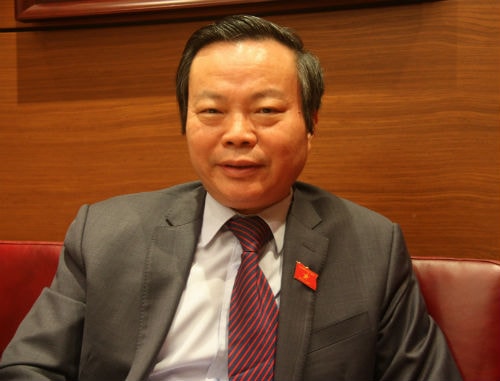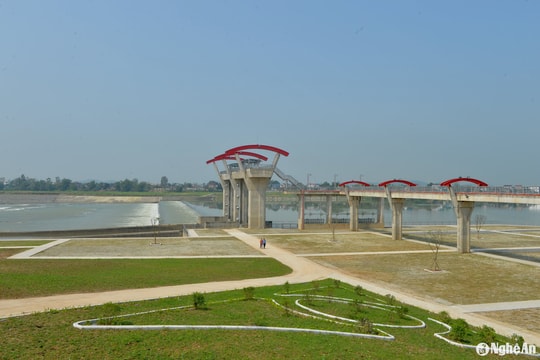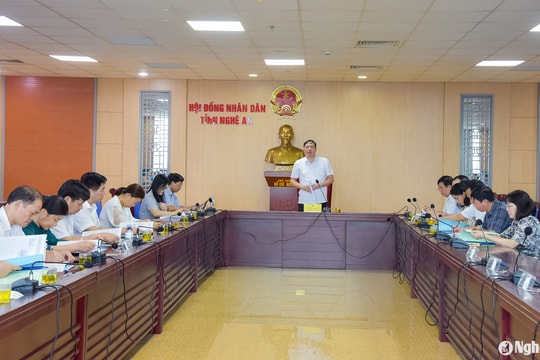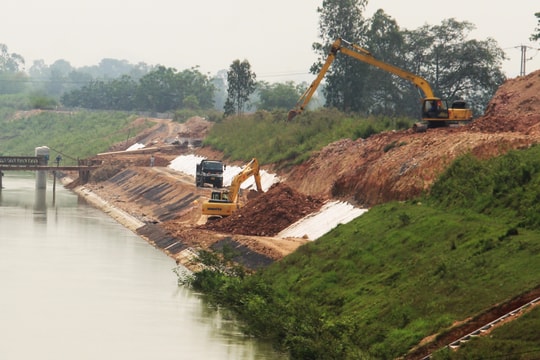'Don't get too drunk with ODA'
Mr. Phung Quoc Hien, Vice Chairman of the National Assembly, said that the gradual shift to mainly domestic borrowing is necessary in the context that Vietnam is getting closer to "graduating" from ODA.
After many years of leading the Finance and Budget Committee, during the 14th National Assembly term, Mr. Phung Quoc Hien was elected to the position of Vice Chairman of the National Assembly. This leader had an interview with the Vietnam News Agency about the "health" of the budget, concerns about public debt when loans are increasing and "expensive".
- Public debt and government debt are forecast to exceed the allowable ceiling by the end of 2016. How do you view this risk?
- When talking about public debt, it must be linked to budget revenue and expenditure. Budget revenue must come from production development, not from "high collection and heavy taxes". In that spirit, we have reduced the tax burden for people and businesses. For example, corporate income tax has been reduced from 35% to 22%, from 2016 it will be only 20%, not to mention the preferential tax rate of only 10%. Value added tax is currently applied at 3 rates of 0%, 5% and 10% - which is the lowest in the region.
 |
Vice Chairman of the National Assembly Phung Quoc Hien. Photo: HT |
The reduction of many taxes, in the context of budget revenue only meeting regular expenditures, in order to have money to spend on development investment, forced to borrow. In addition, there are debts arising from guarantees for a number of enterprises, for a number of large projects such as hydropower, thermal power, aviation... Those factors cause public debt and deficit to increase, the budget faces great pressure. Currently, public debt is within the allowable limit, but the worrying thing is that government debt has increased to 50.3%, exceeding the National Assembly's regulation by 0.3%.
- What specific pressures is the budget under, sir?
- The budget revenue and expenditure balance is currently tense as we have to continue borrowing for development investment. Recurrent expenditures are in high demand, many policies are still owed to the people, such as policies for meritorious people, social security... Revenue sources are limited, but we cannot increase revenue suddenly because it may cause difficulties for businesses and the economy.
Another problem is that Vietnam is about to enter the ODA graduation period, we will have to borrow at higher interest rates, shorter maturity and grace periods. These are great pressures on the Government when managing economic development, having to borrow and ensuring national financial security.
No need to worry about budget "shock" when graduating from ODA
- With the above pressures, especially the more difficult foreign borrowing conditions, what happens if the budget is "shocked" when it can no longer borrow ODA?
- Don't be too enthusiastic about ODA loans, because along with incentives are very strict loan conditions regarding investment, bidding, control... Of course, when switching to commercial loans, there will be greater pressure, more careful calculation of debt repayment sources, calculation so that each loaned coin will be used for the right purpose, right address and effectively, avoiding waste.
To avoid a budget “shock” when graduating from ODA, the loan structure will change by increasing domestic loans to 75-80%, while reducing foreign loans to 20-25%. I think such a loan structure is reasonable. Increasing domestic loans will reduce foreign debt, creating conditions for the domestic financial market to flourish.
- Many experts warn that shifting from foreign loans to domestic loans will create many financial risks for the budget. What do you think?
- Not exactly. Borrowing domestically through bonds has a shorter loan term, and the interest rate can be higher… But the greater benefit is taking advantage of the money source from the people and domestic financial institutions, rather than letting that money flow abroad. Just like a family, if you borrow from relatives, the pressure to repay the debt will not be as heavy as borrowing from outsiders.
- The World Bank predicts that the next 7-10 years will be the period when Vietnam will have to pay the most debt. How is the ability to ensure debt repayment obligations?
- Public debt in Vietnam is developing in a parabolic manner, peaking in 2017, after which the curve will gradually decrease. By 2020, a roadmap must be built to ensure a harmonious balance between revenue, expenditure, debt repayment and control of these issues.
The National Assembly will then come up with a specific plan, decide on the 5-year financial plan and 5-year medium-term investment plan, and at the same time build a framework for revenue and expenditure, deficit, and public debt for each year. The Government's management must be within the framework and not be done in a "wherever the wick goes, there goes the oil". The plan for borrowing, repaying loans, and how to repay the debt will also be included in the specific plan. Regarding public investment, it is absolutely necessary to avoid the situation of doing things without knowing where the capital is, not taking into account the efficiency, the ability to repay the debt... This is the new step that the National Assembly will decide on in the next 2nd session to avoid "shocking" the budget.
Borrow and pay back
- What tools does the National Assembly have to manage budget spending, avoiding the Government being in a situation where it "decides things that have already happened" as it has been doing for a long time?
- Recently, a delegate expressed the opinion that the National Assembly "decides what has already been done" regarding ODA capital. Under pressure from donors, it was forced to accept quick disbursement according to the signed schedule to put the projects into use. Therefore, the actual disbursement in some cases exceeded the estimate. The important thing is that up to now, borrowing and repaying debts are in accordance with the commitment. Although 2017 is forecasted to be the peak year for debt repayment, up to this moment, the Government and the agencies of the National Assembly have calculated the sources for debt repayment, including the source of budget balance, new loans to repay old debts or debt restructuring... ensuring that all debts due will be paid on time.
- What if there are still cases of "breaking the rules" in borrowing and repaying foreign debt?
- The 2013 Constitution clearly stipulates that all budget revenues and expenditures must have estimates. Issues related to budget estimates must be decided by the National Assembly. Therefore, all over-estimated amounts must be reviewed and can be accounted for if they are unreasonable in terms of revenue and expenditure... These tools will force the Government to be extremely strict in spending. The more transparent the budget revenues and expenditures are for monitoring, the more people will know where their tax money goes, overcoming loss and waste. The important thing is to know yourself and know your enemy, to repay when you borrow and repay on time, and to put national financial security and the macro economy first.
According to VNE

.jpg)






